Soon, my son’s ‘Emily Brontë’ shrub rose will bloom. The Brontë Society asked rose breeder David Austin® to name the rose to celebrate the bicentenary of the birth of the novelist. Soft pink, and tea-scented, it’s a beautiful complement to his ‘Lady of Shallot,’ another Austin rose dedicated to literature. When I sat down to write this quick missive, I found this description of Wuthering Heights and Emily Jane…
Her much-loved novel, Wuthering Heights, was published in 1847, a year before her untimely death at the age of 30. It is a dark tale of passion and revenge, centered around the relationship between Cathy Earnshaw and Heathcliff.
‘A dark tale of passion and revenge,’ it certainly is. I’ve set aside working on my own novel lately so that I can focus on writing chapter summaries for a 9-week Wuthering Heights read-along which began in March.
I was encouraged to host a read-along after subscribers mentioned starting the novel and sitting it aside or reading it long, long ago and wishing they had a little support as they revisit the story. Most have been shocked to discover it’s not a romantic fairy tale. Nor are there vivid descriptions of Catherine Earnshaw and her soul-mate, Heathcliff, rambling among waves of heather under a bright, blue sky.
It isn’t until the second half of the novel characters are properly situated out-of-doors and then, each of those scenes is entirely anxiety-inducing; it’s difficult to imagine the author’s landscape. Brontë accurately names every tree, flower and bird, and describes the sky overhead and the ground beneath, but we carry a heavy burden with us as we experience those things and explore those places.
Impending danger and a presence of death haunts every page.
Have I ever mentioned that I spend a lot of time in cemeteries? I do. Not because I am a ghoul, but because I practice the very meaningful craft of genealogy. As our 9-week read-along comes to an end, I look forward to returning to our local cemeteries. They provide me with two things: research and Nature. You may be surprised to learn how many species are living in cemeteries.
This time of year—like the holiday season, for some—is emotionally draining for me. My Gram underwent experimental surgery for her Parkinson’s disease on April 29 in 2003 and after thirty-eight excruciating days in an unconscious state, she died on the third day of June. Four years ago, after four years in cancer treatment, my dad died on the second day of July. And this year, my beloved cousin—the last of her generation—has qualified for hospice care, after her diagnosis of late-stage bladder cancer.1
My parents—in 2021—decided to purchase a burial site in a nearby public cemetery in which my great-grandparents and grandparents are interred. It is a beautiful space; its roads and paths follow the contour of the land, and are lined with shrubs and mature trees. White-tailed deer and a flock of wild turkeys frequent the woods surrounding the well-maintained lawn. A meadow borders one side and farmland, the other.
We now have a small family plot in a new section of the grounds. My parents’ slab lies a few feet from milkweed, dogbane and goldenrod. Next to the flat tablet which bears my parents’ names, a second grey stone is placed. On its surface, the outline of a book is carved; and inside the book, my and my husband’s names are carved along with my maiden name and our birth dates.
Monarchs, fritillaries, skippers, buckeyes, whites, and swallowtails join mockingbirds, titmice, bluebirds and nuthatches, among vetches, toad-flax, wild roses, four o’clocks, dewberries, campions, milkweeds and mullein. All of these are found living among the dead in summer. Insects glimmer and glisten, flowers and grasses sway on the breeze, leaves quiver and quake and the songbirds dip and glide among the stones.
In winter all but the birds and mammals go dormant only to reawaken in the spring.2
While some may view Wuthering Heights as an unromantic and violent story with no literary value, I think I understand Emily Jane Brontë. Her beautiful story is truth.
A life lived presents experiences difficult for others to understand. Emily Brontë was immersed in illness and death. She experienced scandal and terrorizing, death-defying clashes with Nature. Combined with awe-inspiring beauty, the young author included everything she knew, with that which she imagined, and she created one of—if not—the most, studied, written about and curiously critiqued novels in English literature.
Tomorrow we begin Week Seven of our Wuthering Heights read-along. I’m currently working on my Week Eight summary and after I complete Week Nine I look forward to returning to working on my novel, rambling through cemeteries and:
I’m beginning two new Wuthering Heights-related projects:
to catalog art and illustrations related to the published novel and;
to study chapter-by-chapter, the flora, fauna and fungi found within its pages!
I’ve collected a number of unique illustrated editions of Wuthering Heights and I’d like to create a database which helps me find images quickly, for my own research and, to share here with you.
As for Nature study, I’m planning to dedicate this fern-adorned edition of Wuthering Heights to Brontë’s allusions to and mentions of the natural world. Annotating each chapter, and writing about it…I’m eager to learn about the plants and animals in the novel and share the facts and folklore related to each species!
I look forward to comparing our Virginia bluebells with the bluebells of the Heights and our thrushes with the throstles at the Grange. In this inexpensive little pocket paperback I plan to underline, annotate and scribble in the margins!
And…to ramble at liberty. Maybe you’d like to join me? I’m prone to sauntering. ♡
No stranger to death and disease—I am a Stage II BCRA2+ breast cancer survivor and my husband is currently being treated for Stage IV renal cell carcinoma. No coward souls, for certain. ♡
Note the newly deposited eggs on the underside of the hemp dogbane in the image; this moth, also known as a dogbane moth, deposited her eggs on the underside of her host plant in August. Beautiful ghostly-white larvae will hatch and mature from those eggs.
Cover Image: Landscape with Crows, c. 1830 Karl Friedrich Lessing | LACMA


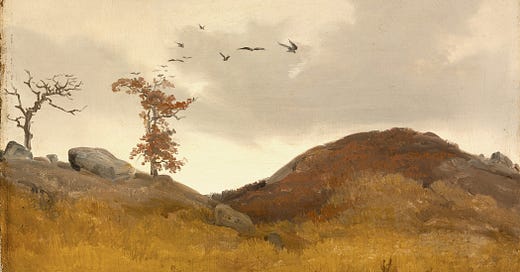


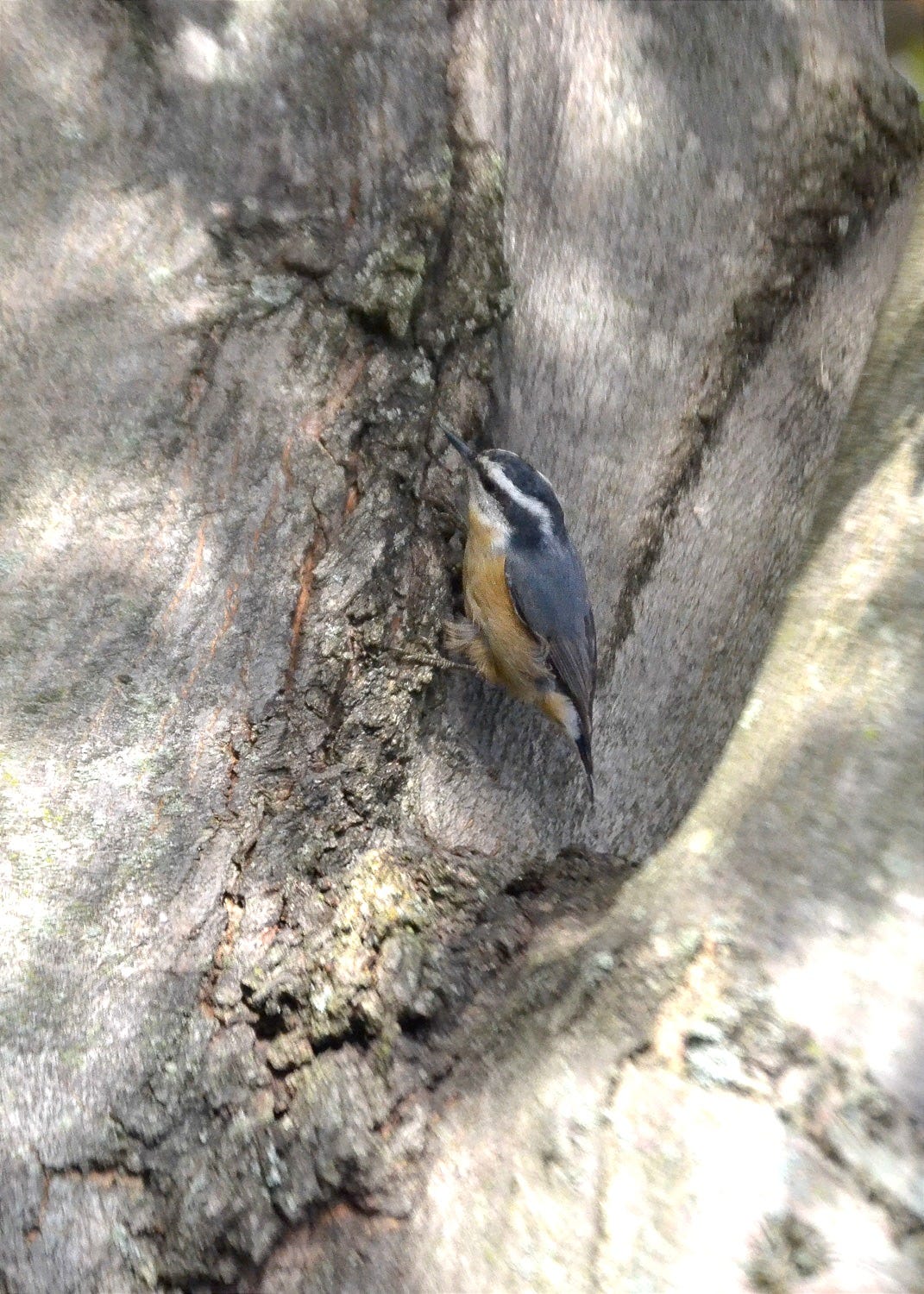
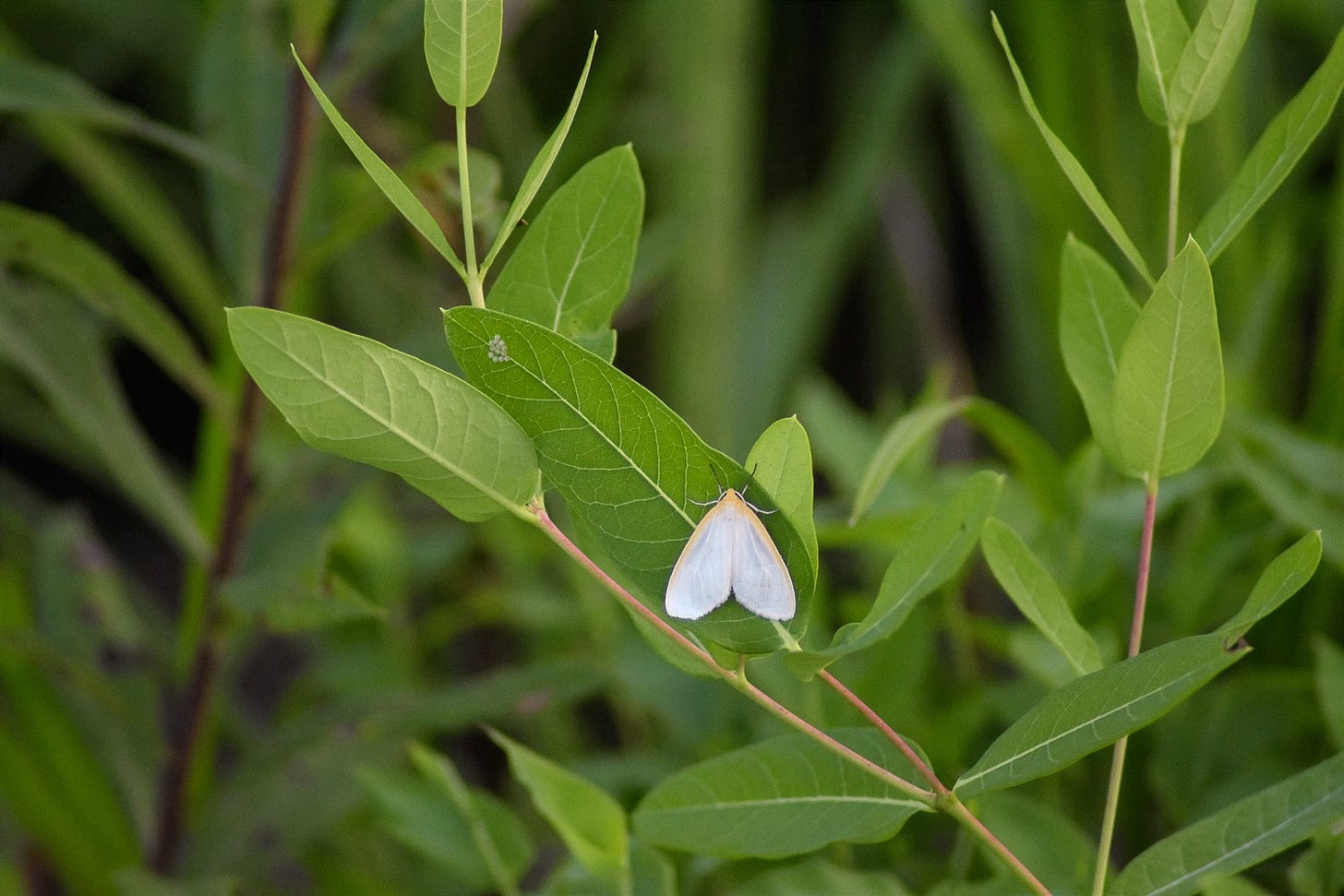
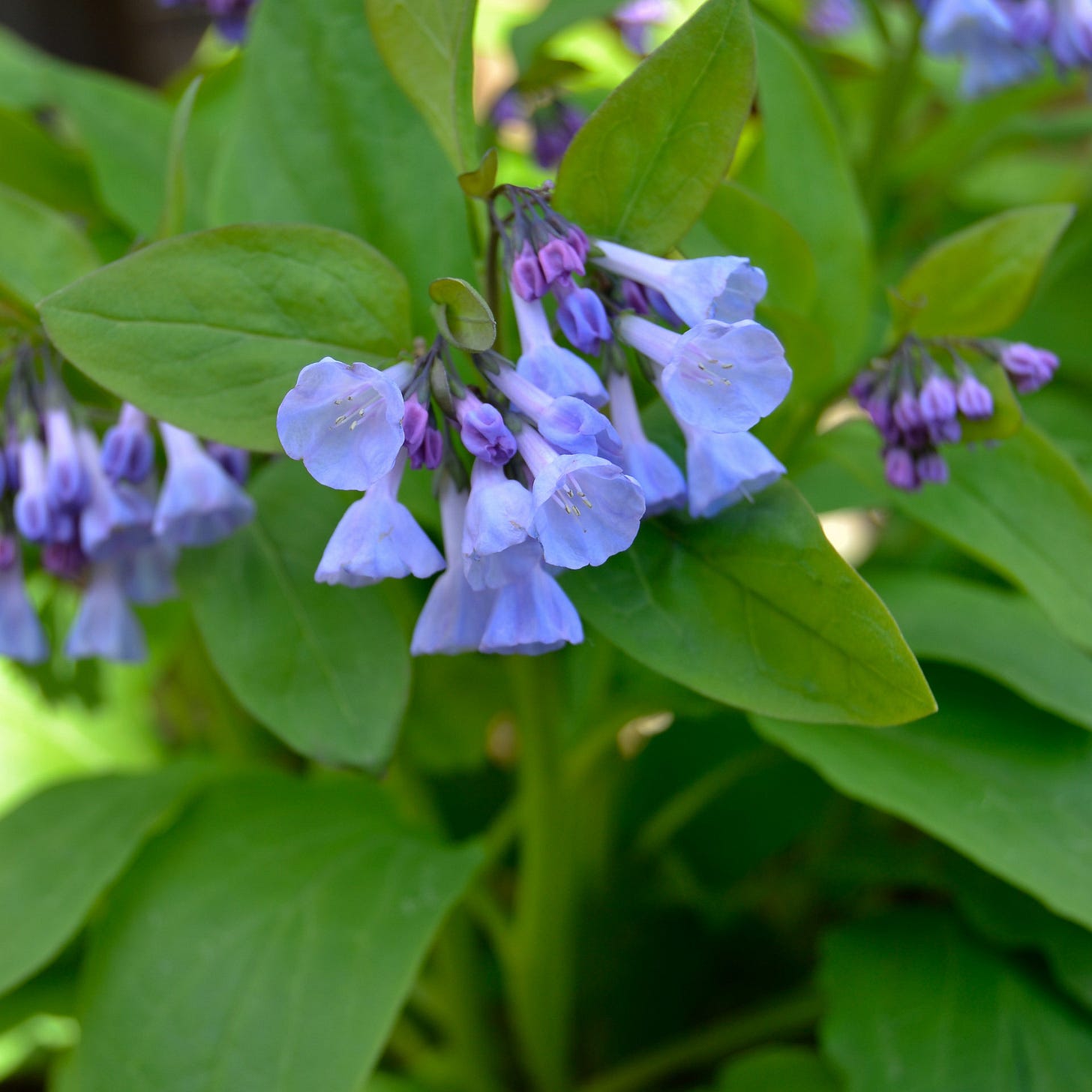
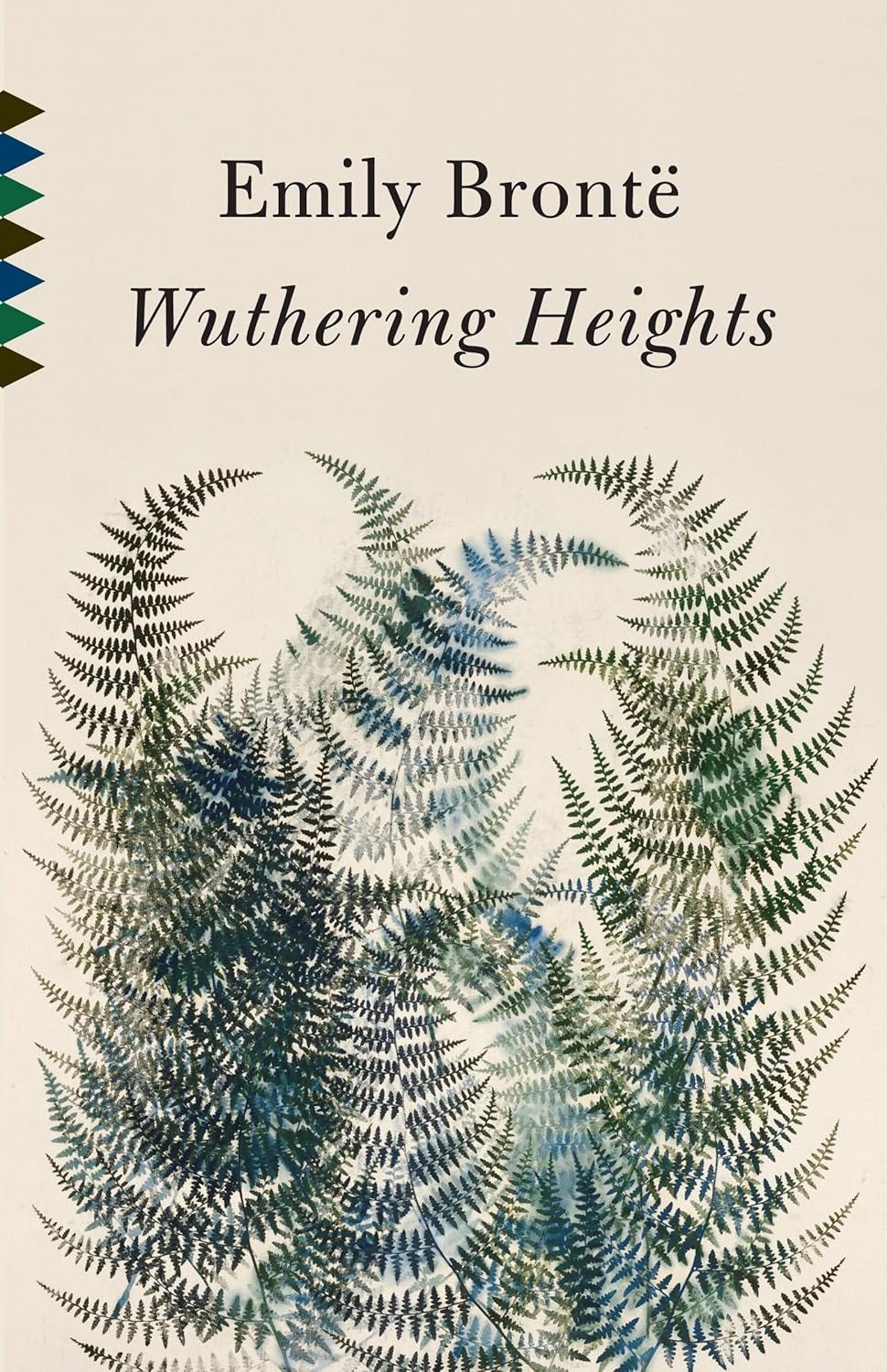
Can’t wait to go cemetery strolling with you again! 🤗